Why did folks buy black cars in the pre-air conditioning era? Surely they must have understood the basic physics involved as to how much hotter a black car gets than one in a lighter color. This potential torture chamber reminds me all too much of our black 1962 Fairlane, which in 1965 was finally confiscated by the Iowa Child Protective Services, thus forcing my father to buy a sand-colored ’65 Coronet. Did folks really like torturing themselves that much?
Sure enough; no sign of A/C in here –although this interior does sport a T-handle Hurst shifter for the three-speed manual transmission. There’s no way to know what’s under the hood; it could be anything, from the base 170 cu. in. six right up to the 289 V8.
In 1964, Mercury took the plunge into factory-supported drag racing with the 427-powered A/FX Caliente, which was analogous to the 1964 Fairlane Thunderbolts. Needless to say, they acquitted themselves quite well and, as a kid, certainly raised my awareness of the Caliente–even in white–as a hot car, even if I didn’t know what “caliente” meant.
The Caliente was a new top-level model in the 1964 Comet lineup. Although the name is most often associated with the hardtop coupe or convertible, obviously there also was a sedan. It’s a rather awkward name, given how back then most Americans didn’t have a clue as to its proper pronounciaton.
But then, this is a somewhat awkward car. Despite having the same basic platform and dimensions of the original 1960 Comet, it’s trying hard to look even more like a genuine mid-size car, especially after the failure and rapid disappearance of the truly mid-size Meteor.
Although its wheelbase is a fairly generous 114″, this Comet shares the Falcon’s narrow body. There’s about three inches less shoulder room inside versus the Fairlane/Meteor, so I’m just thankful my father wasn’t enticed by one of these; of course, if he had been, it would have been the base 202 instead of the Caliente.
The grille has a distinct resemblance to that of the ’64 Continental–no harm in that. And black was a popular color for the Contis. Maybe the Continental association was what this Comet tried to cash in on; then again, by that time most Conti’s had air conditioning. There is a price for riding comfortably.
Note: a rerun of an older post.











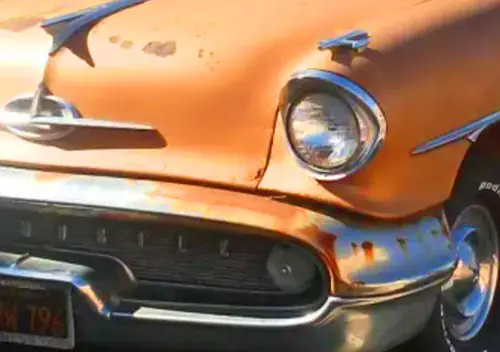
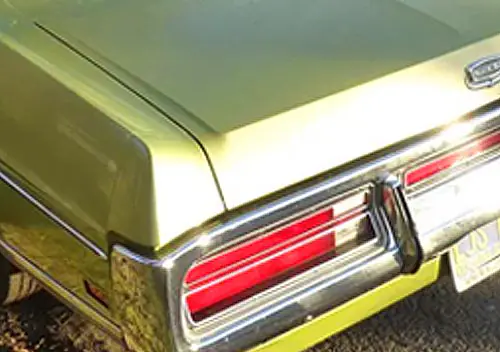



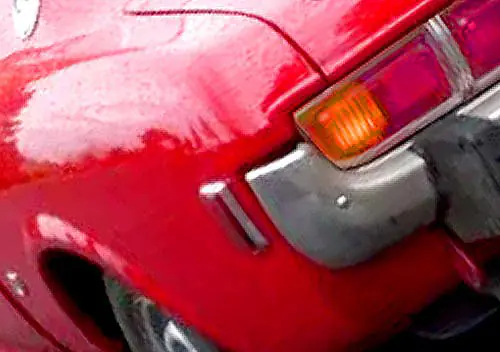

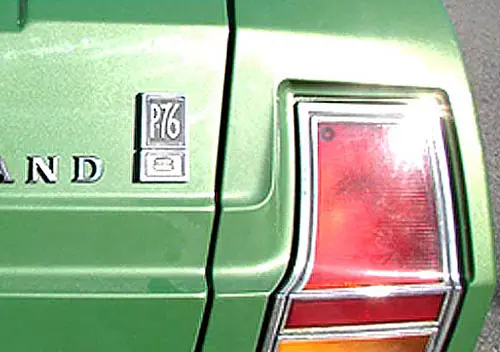
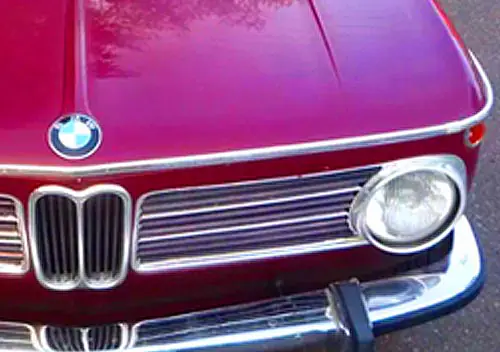


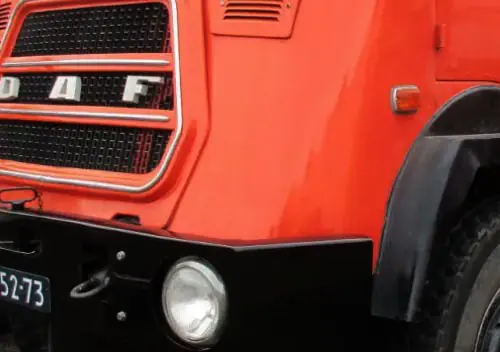
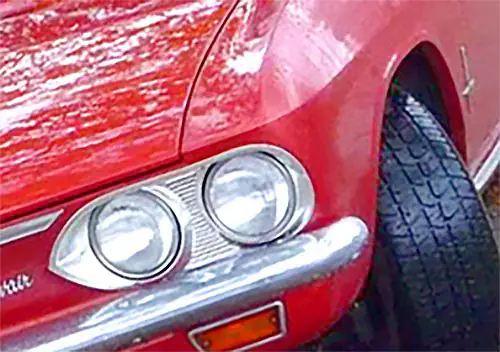

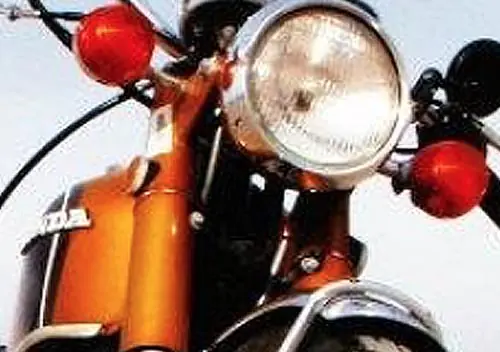
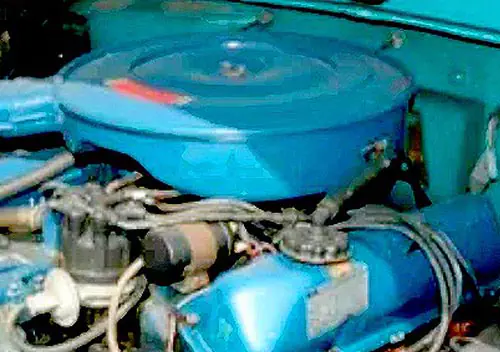



My parents had a black 1953 Chrysler Custom Imperial, no AC in SE Virginia. The really bad thing was, he had traded in the 1948 Pontiac Silver Streak in which he had installed a very functional home built AC system. I remember being quite warm in the Imperial and the fact that the temperature and humidity here have a contest to see which can get higher (temperature ultimately wins as it can go over 100°).
DIY AC in 1948? Really amazing. Would have loved to see that setup.
Me too!
As Gino Vanelli famously sung “black cars look better in the shade”. My parents and I trended toward lighter colored cars, although our BMW 2000 was dark blue with black vinyl seats and rather hot unless it was in the shade or moving. The BMW was replaced by a gold 77 Honda Accord which was their last car without AC. I have a friend who drove a black Pontiac Sunbird without AC for years, before replacing it with a Subaru Forester.
In 1964 Mom and Dad had bought a more sensible yet paradoxically more luxurious Plymouth Valiant with AC and an automatic, and probably never even considered a Comet.
A Montreal taxi driver, spent 36 years driving a black 1963 Plymouth Fury. I don’t know for sure, but I doubt it had air conditioning.
Driving 1,621,591 miles, in that time. While carrying, an estimated 800,000 passengers.
It looks like 5 bolt wheels – V-8. Until 1967, the small Fords ( including Mustang) had 4 bolt wheels on the six cylinder cars. The V-8s had a heavier duty suspension recognizable by the 5 bolt wheels. No call out for 289 so likely a 260, which only came with a 2: bolt carburetor.
Pop grew up in the era where “gangster” movies were quite popular. In that era, gangsters were often deified as the powerful men who stood up for the downtrodden. They all drove big, black cars. So Pop aspired to a big, black car, and if affording a big, black car meant eschewing A/C, that’s how it was gonna be.
When I was a little kid, his Pop drove a “hand me up” car, an early 60s Oldsmobile 88 that my father purchased brand new. it was the epitome of a “big, black car” and it didn’t have A/C.
That’s just how it was back then .
I never had AC until the 2000’s, I love it now .
Still drive my beige ’59 VW Beetle in Death Valley though, I must like hair shorts or something .
-Nate
Hair shirts, not shorts. My parents had an original Beetle in El Paso, but a later one with a bigger engine. It had AC with no problems, but they probably never drove up a mountain at 100F, which might toast any Beetle. You can still get similar systems for them, probably because most remaining ones are expensively restored.
My father was very frugal, not a bad thing, and my parents cars for most of their lives lacked AC. But even when they got AC equipped cars, he was too frugal to use it, especially if the sun was on my side and not his. And if I was riding in the back seat of his Chevy Astro, he wouldn’t even let me open the pop-out windows because he thought the glass wasn’t designed to be open at speed. Started taking my own car as much as I could.
My current-gen white (with charcoal interior) VW Jetta is easily the hottest interior of a car I’ve ever owned. Anything above 65 degrees and I need windows opened or AC on. I can only imagine how much worse black Jettas must be.
My dad was able to get a fantastic deal on a leftover 1980 VW Rabbit — black with black interior, no AC, no sunroof. Even in the far northern suburbs of the NYC metro area, it was almost painful to drive in the summer months; even with all the windows open. The family nickname for the car was “the oven”.
Just as crazy was people’s admiration for black top/interior, when the “eponymous” vinyl tops came into fashion.
(also was one of the most spotted combo’s on dealer lots at the time))
Could be worse. Could have had those clear plastic Fingerhut bubble-surface plastic seat covers. Those things, on a dark interior in a dark color car, in the summer, are their own circle of hell.
Neighbors “68 Impala”, and the piano stool, and the living room furniture, and the dining room chairs, all were covered in that stuff..lol
Interior or the white, “Impala” was med blue, brocade.
Strange how a post like this can bring back memories. I was only 10 or 11 when Dad was assigned to be base commander of Robins AFB, Warner Robins, GA, about 1961-62. Of course we lived in officers housing. My very first friend was Kurt, two doors down the block from out house.
Dad bought our new 1963 T-Bird and just a few weeks later Kurt’s parents had a beautiful blue 1963 Comet convertible. Within a year next door neighbor had a 1964 T-Bird.
My father grew up very poor and those years never left him. For that reason, he had the knack for buying the cheapest car on the lot. In 1971, it led him to a 1970 Pontiac Strato Chief, a two door hard top with SBC 350 and Powerglide. The car was not black but turquoise, with a black vinyl interior. In the summer, it got to like 200 billion degrees in the car (or a least that is what it felt like to my ten year old view) and we were not, repeat, not, allowed to roll the windows down lest me muss mother’s hair.
By 1979, dad decided to let his hair down a bit. He factory ordered a 1979 Chevrolet Impala. He got air conditioning, which was $800 at the time (or about C$3400 today), because he hated being hot. He steadfastly refused to order power windows, locks or FM radio. Such things were just to frivolous!
In 1986, he bought a loaded VW Jetta. I suppose it was because he and mom were empty nesters by that point. They were also flush with cash by way of quitting the alcohol.
Maybe you can answer a nagging question I’ve always had about GMs of this era. Did this radio delete stripper still include a radio antenna in the windshield, or were so cheap they left it out?
The Strato Chief had no radio in it but it did have the wretched windshield antenna. Dad bought a radio from my uncle, from his blown up 1963 Meteor. It kind of fit in the hole where the radio goes. That windshield antenna really didn’t work very well and dad had a conventional post antenna installed.
A black car does not make for hot interior. The surface area of the roof would indeed be hotter than white, but it then has to conduct the heat thru the headliner and then convect to the interior air which amounts to significant thermal resistance. The overwhelming majority of the heat flux to the interior is due to radiation thru the glass and then absorption by the interior and convection to the interior air. A black interior has a major impact on this as well as the configuration of the glass “greenhouse”.
For example, a white ’60 Chevy Impala 2 door bubbletop with black interior would have a hotter interior than a squared off black 1962 Ford Galaxie 2 door hardtop with a light color interior.
Numerous studies have confirmed what is of course utterly logical and intuitive: black cars’ interiors heat up faster and higher than a comparable white or light colored car. The insulation to resist the heat transfer from a black exterior to the interior is minimal in a car, thus the significantly higher exterior body temperature will of course radiate into the interior and make it hotter. Several of these studies are cited in this article:
https://carfromjapan.com/article/do-black-cars-get-hotter/#:~:text=They%20pitted%20a%20white%20car,10%20degrees%20more%20than%20that.
Obviously these compare similar cars. And obviously comparing cars with different amounts of glazing and other factors will result in different outcomes. My xB has a black interior but stays remarkably cool inside due to it being white as well as the windshield and all the windows being near vertical.
But in any apples-to-apples comparison, a white car will inevitably stay cooler inside than a black one.
I’m a degreed mechanical engineer (retired) with 40+ years experience. I performed many thermal analysis including a large military system that was tested at the Aberdeen proving grounds in an oven with heat lamps providing the 1000watts/m2 solar load. The actual interior temperature came within a few degrees of my analysis
Solar radiation thru the glass overwhelms all other things on a hot sunny day. The sun’s radiation incidence angle is very important. Yes there would be some additional load thru the roof but the resistance is high. Not only is there a headliner but now the convection currents would have to be on a horizontal surface which is the worst case.
The linked article talked about surface temperature which of course would be higher. The 10 degree interior difference is suspect. I would suspect that the solar radiation angle of incidence may not have been the same. Clouds of course are a major factor. The only way to properly test is with an oven and a solar gun.
Well, I have “some” 1st hand Life experience. (Confirmed just today in fact, where in CT it is 95+ degrees). My 2016 Jeep Wrangler has a Black Hardtop with “freedom panels” (which are about 1-2″ thick, and hollow “plastic” with carpet inset on each panel) almost a flat textured black.
Went to lunch, turned on AC and while I was cooling from A/C pointed AT me, I parked in the shade for a few, and could STILL feel the HEAT emanating from the inside of roof a couple inches from my head. Mad heat. So I would 100% agree that car color affects interior temps. Not AS much as sun coming through windows, but a Factor none the less. SO much, that when I repaint my TOP (soon), I’m considering white. (which apparently It originally was). Even though white doesn’t go with lame grey nearly as much as the black.
Paul, I’m sorry about your dad’s choice for a family car. I dad brought home a used Corvair as our new family car in ’63 or ’64. That car to this day makes me get a tear. I was only 4 or 5 years old. This car is identical to it. I’m sure ours parished to road salt.
Our next-door neighbors in Burlington were a Mercury Family in the 60’s…we moved there in ’65 and they had a ’63 Comet like this one, but in Bronze (dark colors don’t matter as much up there on cars). They later had a ’68 Park Lane wagon.
We’ve lived in central Texas for the past 43 years (Parents moved directly from Shelburne, Vt to Texas, I moved from Massachusetts) and though light colored cars are more appreciated here, looking at used cars it seems like there are a pretty large number of black cars, even in smaller sized cars. Parking garages are much more common since we moved here (way more people here than in the early 80’s) but plenty of places still have surface lots, so you’d think lighter colored cars would be much more popular, but to my eye, they aren’t. I like unusual model cars, and it seems like a lot of them you window shop on the computer are black…don’t know what I’d decide if a car otherwise liked was black…they no longer sell the car I like new anymore.